The fourth week of July recorded a historical milestone when the total market capitalization of crypto first reached $4 trillion. Meanwhile, the market cap of altcoins is also nearing all-time highs (ATH), creating a wave of optimism across the market.
However, in this euphoric context, many altcoins – particularly those favored by short-term traders using high leverage – are facing the risk of mass liquidation if strong price fluctuations occur.
1. XRP – Opportunity or liquidation trap?
July marks a notable milestone for XRP as open interest (the total value of open positions in the derivatives market) reaches an all-time high of $10.9 billion, according to data from Coinglass. This signals a strong influx of speculative capital into XRP, amidst the overall market's euphoric wave.
A noteworthy factor is that the funding rate of XRP has turned positive and reached its highest level since the beginning of the year. This positive rate means that the futures contract price is higher than the spot price – reflecting strong optimism as most traders are betting on upward momentum.
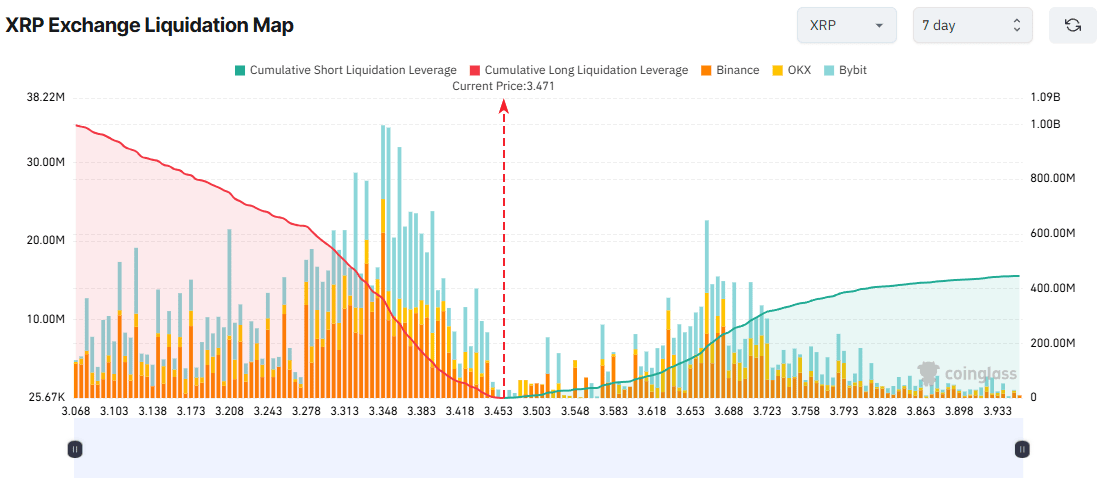
However, it is the imbalance between Long and Short positions that is placing XRP in a dangerous zone. Data from the 7-day liquidation map indicates that the accumulated liquidation value of Long positions far exceeds that of Short positions. If XRP's price unexpectedly drops to the $3 mark this week, the total liquidation value of Long positions could reach nearly $1 billion – a concerning figure.
This concern is not unfounded. XRP is recording a decrease in the number of new investors – a signal that often precedes short-term corrections.
Nonetheless, there are still bright spots. The latest report from Kaiko shows that the 1% market depth of XRP – an important measure of liquidity – has reached a record high for the year, nearly $10 million in the spot market. This helps XRP surpass major altcoins like SOL, BNB, and ADA, ranking just behind Ethereum in effective order matching capability.
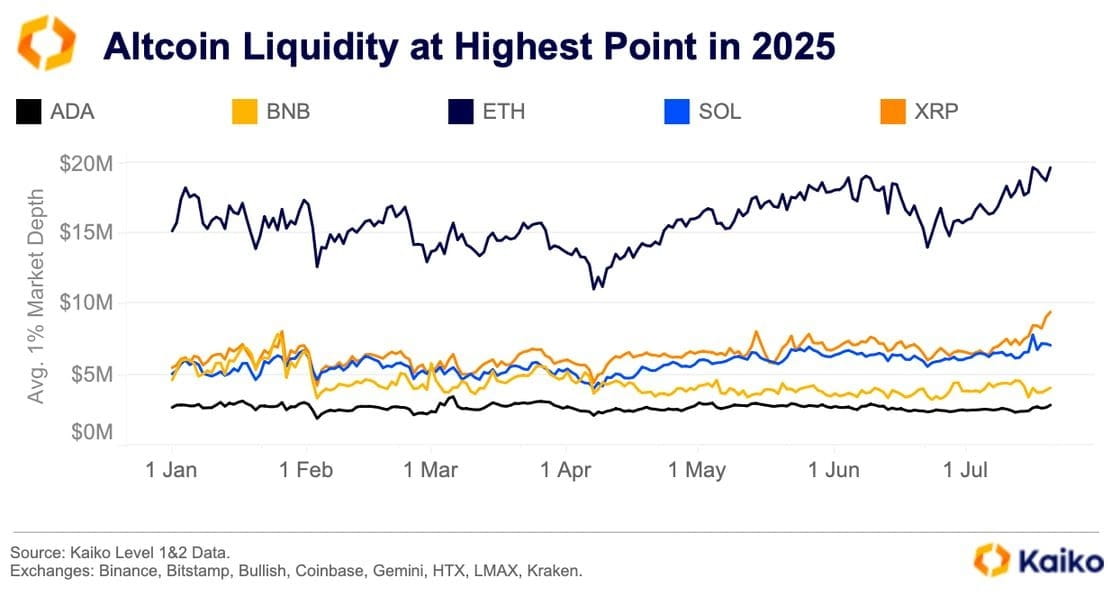
In summary, XRP is in a 'tightrope' situation: strong demand, abundant liquidity, but the risk of mass liquidation is always lurking if the market reverses. In the current high-volatility environment, derivatives traders need to be careful with leverage and their risk management strategies.
2. DOGE – The meme coin season returns, but liquidation risks loom
July witnessed the rise of Dogecoin (DOGE) as this legendary meme coin attracted significant attention from investors. The strong momentum comes from news that Bit Origin – a blockchain company – is planning to raise up to $500 million to establish a Dogecoin investment fund, thereby reinforcing confidence in the possibility of a 'meme coin season' returning, alongside the recovery of altcoins.
According to data from Coinglass, the funding rate of DOGE peaked at the highest level of the year on July 21, coinciding with the price bouncing to $0.28. This indicates that the majority of short-term traders are betting on an upward trend, opening Long positions with the expectation that DOGE will continue to rise.
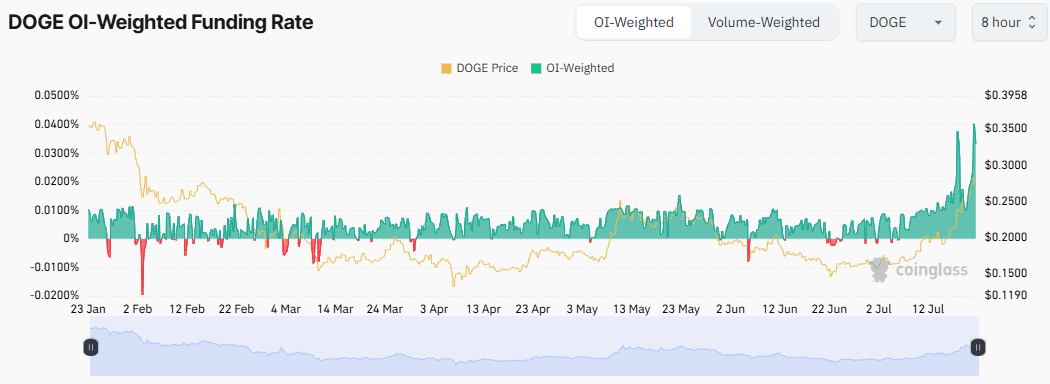
However, the use of high leverage also significantly increases liquidation risks. A typical example is the well-known trader on the Hyperliquid platform – James Wynn – who recently had to liquidate part of a position worth 4.45 million DOGE (equivalent to $1.15 million) after closing Long positions.
Currently, DOGE has slightly corrected, dropping from the peak of $0.28 to around $0.266. Data from the 7-day liquidation map shows that if the price continues to plummet to the $0.236 mark, the total liquidation value of Long positions could hit $300 million – a figure sufficient to shake the derivatives market.
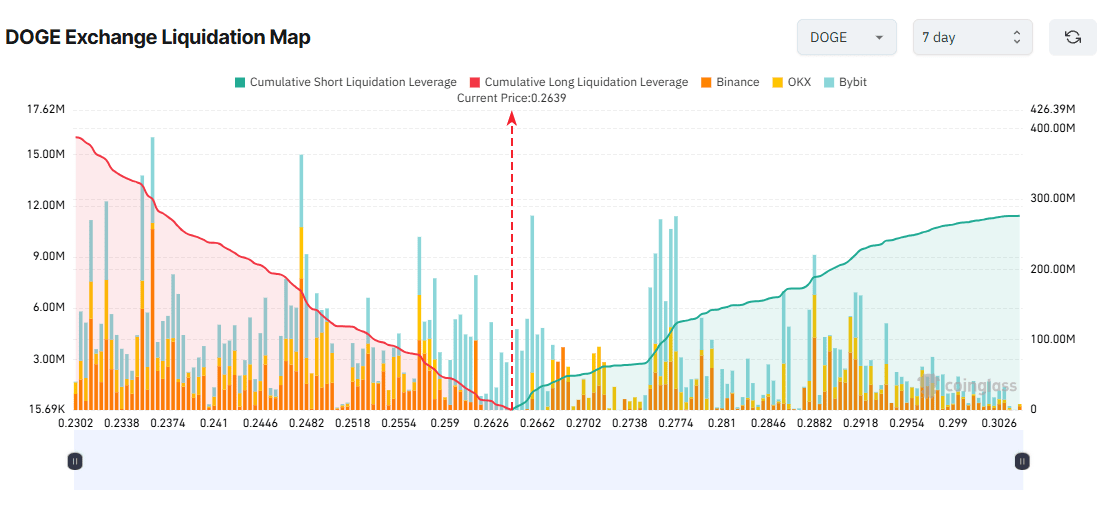
Additionally, long-term DOGE holders are quietly withdrawing capital, a sign that profit-taking sentiment may be forming behind the scenes.
In the context of a euphoric yet fragile market, DOGE carries both the opportunity for a breakout and the risk of a deep correction. Leveraged traders need to be particularly cautious of sudden price fluctuations and should closely monitor important technical levels in the coming week.
3. ADA – Unstoppable acceleration, but the risk zone is expanding
July marks a boom period for Cardano (ADA) as open interest volume reaches a new record high of $1.74 billion, amidst this coin entering its fifth consecutive week of price increase. The steady increase has led many analysts to believe that the $1 mark is just a matter of time.
On-chain indicators such as Coin Days Destroyed (CDD) and the MVRV Ratio reinforce the bullish thesis, showing that many investors are still holding and expecting higher valuations in the short term.
However, data from Coinglass shows that the derivatives market is entering a 'stress' zone. The 7-day liquidation map reveals that if ADA hits the $1 mark, the total value of liquidated Short positions could reach $58 million – a squeeze that could push prices up significantly in a short time.
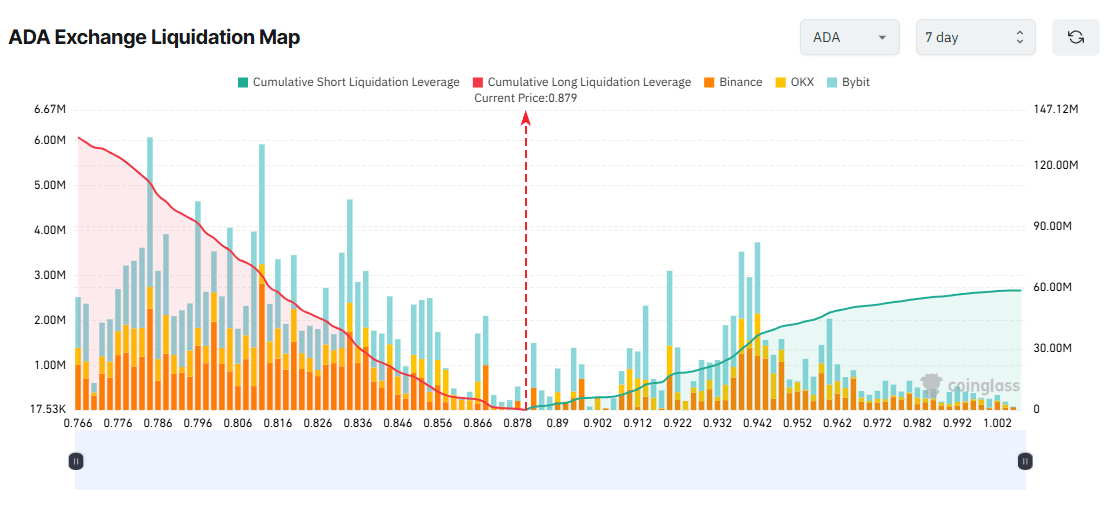
Conversely, if the price drops to $0.78, Long positions will face liquidation risks of up to $120 million, indicating a clear imbalance between Long and Short positions in the current market.
Another potential factor that could influence investor sentiment is the information regarding Charles Hoskinson – co-founder of Cardano – preparing to announce an important audit report. While the specific content is not yet clear, such documents can trigger strong reactions if controversial elements arise.
Tension in the derivatives market continues to escalate. As of the time of writing, the total open interest in the market has surpassed $213 billion, a figure reflecting extremely high speculative levels. In the last 24 hours alone, more than 152,000 traders have been liquidated, with a total value reaching $553.68 million, of which over $370 million came from Long positions – a significant signal for the upcoming trading week.
In summary, while ADA is showing impressive technical strength, the current market is fraught with volatility risks. Investors – especially leveraged traders – need to be cautious of sudden reversal scenarios as the market enters overbought territory and sentiment becomes increasingly complex.